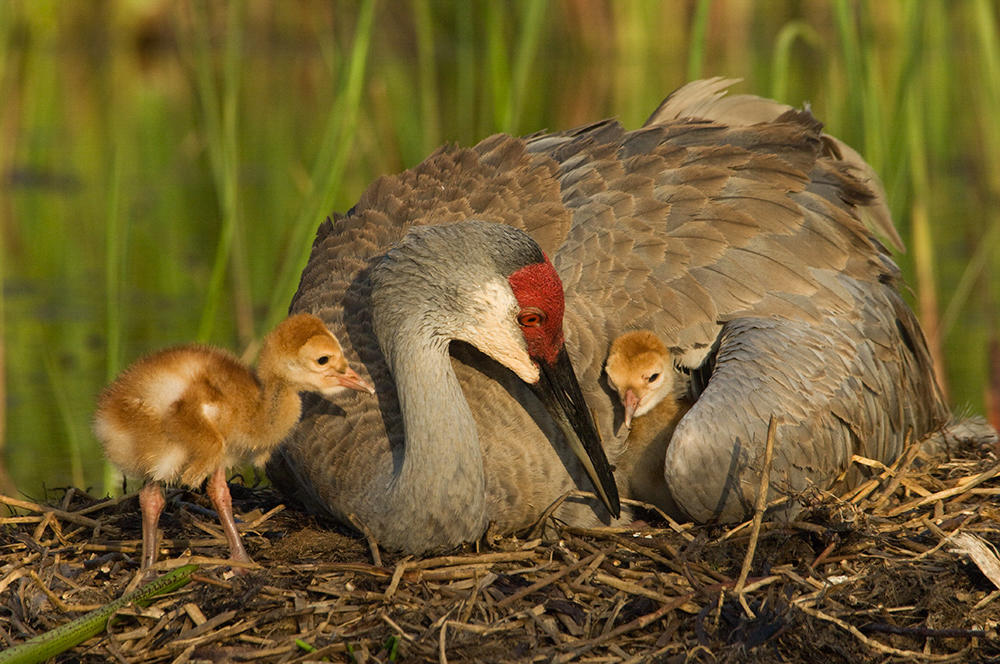
ALASKA (July 22, 2020) – “From Tanana Lake to Kodiak, Denali, and the Tongass, all of Alaska will benefit from the passage of this legislation,” said Natalie Dawson, vice president and executive director at Audubon Alaska. “Permanently funding the Land and Water Conservation Fund means better parks, more jobs, and protection of wildlife like Sandhill Cranes in the Kenai National Wildlife Refuge and brown bears in Katmai National Park. Thank you Representative Young, as well as Senators Murkowski and Sullivan for supporting this important bill.
In a bipartisan vote today, the House of Representative passed the Great American Outdoors Act (S. 3422), providing permanent, mandatory funding for the Land and Water Conservation Fund (LWCF) at the authorized amount of $900 million annually at no additional cost to taxpayers. The program will help national parks, local parks, public lands, and athletic fields in every county across the country. The bill was passed by the Senate in June in a 73-25 vote and will move to President Trump next, who has indicated his support.
“There couldn’t be a more important time than now to improve parks, protect birds and wildlife, and create jobs in every state across the country,” said Sarah Greenberger, senior vice president for conservation policy at National Audubon Society. “By providing full and permanent funding for the 50-year-old Land and Water Conservation Fund, we will fully realize the law’s intent to conserve natural landscapes, enhance recreation, and protect wildlife while creating jobs and driving investment in local communities.”
The bill also creates a new fund ($1.9 billion annually for five years) to address deferred maintenance projects at the National Park Service, Forest Service, U.S. Fish and Wildlife Service, Bureau of Land Management, and Bureau of Indian Education schools. These public lands and spaces provide critical bird habitat, protect endangered species, support the capture of carbon emissions, and connect people with birds across the country, but have struggled to keep up with repairs for buildings and infrastructure even as visitation has increased.
“This is the kind of bipartisanship the country needs,” said David Yarnold, president and CEO of the National Audubon Society. “Our parks and public lands are sanctuaries for people and birds alike and now we can do more to provide the protection and care they deserve.”
###
Media Contact:
Rebecca Sentner, Communications Manager, Audubon Alaska, rebecca.sentner@audubon.org
About Audubon
The National Audubon Society protects birds and the places they need, today and tomorrow. Audubon works throughout the Americas using science, advocacy, education, and on-the-ground conservation. State programs, nature centers, chapters, and partners give Audubon an unparalleled wingspan that reaches millions of people each year to inform, inspire, and unite diverse communities in conservation action. A nonprofit conservation organization since 1905, Audubon believes in a world in which people and wildlife thrive. Learn more at www.audubon.org and on Facebook, Twitter and Instagram @audubonsociety.
Since 1977, Audubon Alaska's mission is to conserve the spectacular natural ecosystems of the state, focusing on birds, other wildlife, and their habitats, for the benefit and enjoyment of current and future generations. Audubon Alaska uses science to identify conservation priorities and support conservation actions and policies, with an emphasis on public lands and waters. Audubon Alaska is a state office of the National Audubon Society. Learn more at www.AudubonAlaska.org.



